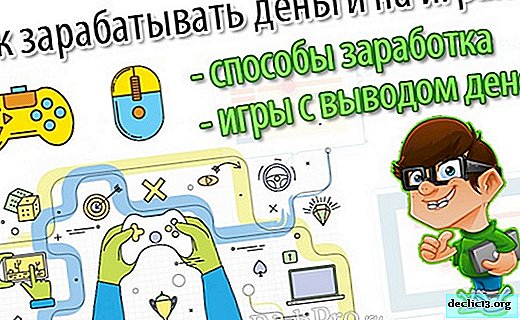How to develop quick counting skills? Tips for all ages

The teaching methods of the past century for such professions as economist, salesman, merchandiser, elementary school arithmetic teacher, have been erased from the memory of society as remnants of the Soviet past. But they had a lot of useful things. In particular, such exercises, which activated brain activity, developed logical thinking, using both hemispheres of the brain to find optimal solutions to mathematical problems and be able to count quickly in the mind.
Separate elements of the methods formed the basis of modern courses in mental mathematics and training programs for quick oral counting. Today it is a luxury - the ability to quickly count in the mind, and in the distant past, this was a necessary condition for social adaptation and survival.
Why you need to be able to count in your mind

The human brain is an organ that needs a constant load, otherwise the mechanism of atrophy is triggered.
Another feature is that all neural processes in the brain proceed simultaneously and are interconnected. Thus, insufficient physical and mental activity, the predominance of static load, lead to distraction, inattention and irritability. In the worst case, a stressful condition can develop, the consequences of which are difficult to predict.
The knowledge of the surrounding world and the laws of social life comes to the child as he grows up and learns, and mathematics plays an important role in this, since it is she who teaches us to build logical connections, algorithms and parallels.
Psychologists and experienced teachers identify different reasons why a child needs to learn to count in his mind:
- Increased concentration of attention and observation.
- Short-term memory training.
- The activation of thought processes and the development of literate speech.
- Ability to think variably and abstractly.
- Training the ability to recognize patterns and analogies.
Oral Counting Techniques and Exercises for Adults

The range of tasks and problems of an adult is much wider than that of a child. In a number of professions and in everyday life, people daily have to deal with mathematical problems a hundred times a day:
- How much profit it will bring to me.
- Have you been cheated on me at the store?
- Whether the reseller overstated the margin on the purchased goods.
- It is cheaper to take out a loan with a monthly interest payment or every three months.
- Which is better - an hourly wage of 150 rubles or a monthly salary of 18,000 rubles.
The list goes on, but the fact of the need for oral counting skills is undeniable.
Preparatory phase - awareness of the need for oral counting
Mental mathematics and any other technique designed to teach counting at home in the mind faster and more efficiently teaches adults and children.
Their only difference is the scope of knowledge. The developers of MM courses try to select puzzles for adults in such a way that they are in demand in the work.
☞ Example:
You have in your hands a futures contract with a due date of January 1, 2019 and you set out to calculate on what day of the week this event will occur (suddenly Friday). All operations are carried out with the last two digits of the year, in our case it is 19. First you need to add a quarter to 19, this can be done by simple division: 19: 2 = 8.5, then 8.5: 2 = 4.25. The digits after the decimal point are discarded. We add: 19 + 4 = 23. The day of the week is simply determined: from the received figure, it is necessary to subtract the product closest to it with the number 7. In our case, this is 7 * 3 = 21. Therefore, 23 - 21 = 2. The expiration date of the futures is the second day or tuesday.
It is not difficult to check by looking at the calendar, but if it is not at hand, this technique can be useful, and will raise you in the eyes of others.
Video plotMethods of fast addition, subtraction, multiplication and division of different numbers
Examples with varying degrees of complexity require a different amount of time, although with constant practice the number of expended efforts is reduced.
Addition and subtraction in mental mathematics tend to simplify. Complex and global tasks are divided into smaller and simpler ones. Larger numbers are rounded.
☞ Example of addition:
17 996 + 2676 + 3592 = 18 000 + 3600 + 2680 - 4 - 8 - 4 = 21600 + 2000 + 600 + 80 - 10 - 6 = 23600 + 600 + 70 - 6 = 24200 + 70 - 6 = 24270 - 6 = 24264.
At first it will be difficult to keep such a long chain in your head and you will have to mentally pronounce all the numbers so as not to go astray, but as the short-term memory improves, the process will become easier and more understandable.
☞ Subtraction example:
The process is identical for subtraction. First, subtract the rounded number, and then add the excess. A simple example: 7635 - 5493 = 7635 - 5500 + 7 = 2135 + 7 = 2142
For multiplication and division, there are small tricks, including those previously mentioned in the example with dates. In practice, examples with percentages or proportions are most often encountered. The essence of their solution also comes down to crushing and simplifying the task. Some can be solved with just one click.
☞ Example of multiplication and division:
You have deposited 36 000 at. e. at 11% and you need to calculate how much profit it will bring. The secret of the calculation is simple - the first and last digit will remain the same, and the middle will be the sum of the two extreme numbers. So 36 * 11 = 3 (3 + 6) 6 = 396 or in our case 396/100% = 3 960 y. e.
In most mental methods of multiplication and division, a prerequisite and no alternative is knowledge of the multiplication table to ten. For elementary school children, the training program for oral counting will be different.
Tips for children on oral counting exercises

Children are faced with tasks of a different order. In addition to tedious memorization, they are also forced to multiply and divide apples and tomatoes, and if you ask why this is done, the teacher will say “at best” at best, and the child will lose interest in the whole process.
It is impossible to change the education system in a month, but to help a child develop oral counting skills is quite realistic.
Preparatory stage
Explain to the child in an accessible language, why consider in the mind - this is not only useful, but also interesting. If you decide to deal with it yourself, pick up illustrated materials from various sources and make a schedule for joint classes. It is not necessary to practice daily and for many hours. This will not be beneficial. It is enough to devote twenty minutes to this three times a week, but at the same time, so that the child gets used to it.
Examples of exercises for children
Start with interesting tasks to get involved in the game. Show how you can quickly get an answer to a difficult example and overtake all classmates. Develop leadership skills.
☞ Example:
We use the rule of multiplying two-digit numbers with the same first digits and the last, giving a total of "10" to solve the example "44 * 46". We multiply the first digit by the one that follows it in order. The last digits are also multiplied: 44 * 46 = (4 * 5 = 20; 4 * 6 = 24) = 2024.
At school, such examples are solved in the old fashioned way, in a column. It only takes a lot of time to rewrite everything. Knowing the multiplication table for 4, this example can be solved in the mind in a couple of seconds.
What is taught at school and is it possible to believe everything
The classical school as a whole is skeptical of accelerated counting methods, citing as an example children who, trained in the methods of mental mathematics, then do not tend to think logically in other subjects, want to do everything quickly, as they are used to, and not qualitatively.
But this is associated more with the inertness of the educational program than with the real state of things.
Video info
Mental mathematics helps to activate mental processes, but does not call for throwing out notebooks, so as not to count in a column, and books, so as not to read. The methods of oral counting are well absorbed by the child in parallel with the written methods, which are more often used in elementary school arithmetic. He sees several ways to solve problems and feels more confident than his classmates.

















